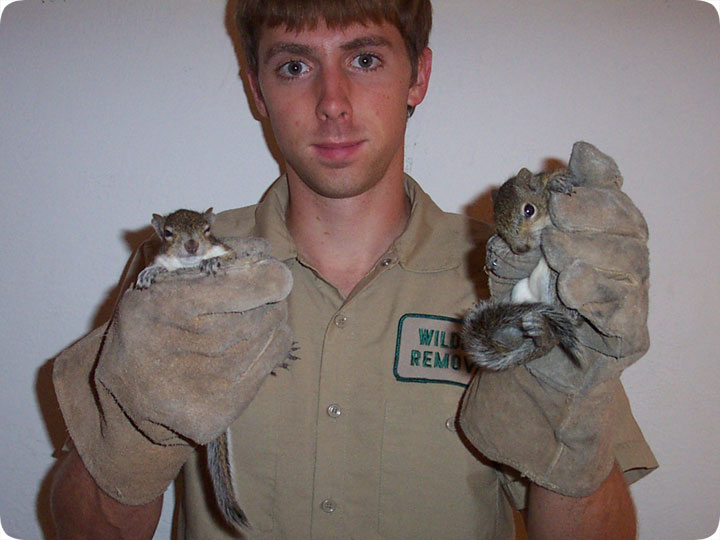-
info@aaanimalcontrol.com
Call us for help in your town
Humane Wildlife Education
Catch Squirrels on the Roof

More commonly than nesting on the roof though, squirrels prefer to nest inside the house, in the attic or soffit. In cases such as these, it can be hard to find the nest of young squirrels, if a nest is present, but it must be done, or else they will die. One option, if the nest can't be found, is to just wait a few weeks, until the young squirrels are out and about on their own, and then they can all be trapped.
Usually you will not be able to hear squirrels running on your roof. Unless you have a thin flat roof, I'd almost think it'd be impossible to hear squirrels on the roof. If you're hearing noises above your head, particularly during the daytime, and especially during the morning or evening, it's likely that you have squirrel in your attic, not on the roof. In such cases, I do set the traps on the roof, since squirrels will rarely enter a trap placed inside the attic. They're just not in a foraging mode inside their home. They go outside to eat and drink, and traps on the roof near the entry hole always catch them.
Do it yourself: Visit my How To Get Rid of Squirrels page for tips and advice.
Get professional help: Visit my Nationwide Pro Directory of wildlife removal experts.
The Eastern Gray Squirrel (Sciurus carolinensis), is one of the most widespread nuisance animals in the country. It lives throughout most of the United States. It is arboreal (likes to live in trees), but just as commonly atticeal (likes to live in attics). It's a member of the rodent family, and is prone to chewing and gnawing. Squirrels are active during the daytime, particularly morning and evening. They are active year-round. They give birth to two litters of young per year, in late summer and late winter, commonly inside buildings they've chewed into. They are very agile and great climbers, and are active animals. They are cute, but often destructive, especially when they enter an attic.
For more wildlife stories, click my Wildlife Blog, or click my below banner to hire a local trapper.

Stop A Squirrel Trying To Enter The House through the Roof - A squirrel can find many ways to get into your house if it wants to. The problem is that with the conditions being harsh outside, the squirrel will probably want to get into your house. The cold of winter and the constant threat of predators can make your home very appealing to the little rodents, so how do you stop a squirrel trying to enter the house? You have to make access to your home too difficult for the squirrel to even try to come in. So first you have to find all possible entry points to your home, particularly at the roof level.
The first thing that you have to look for is any tree branches that may be close enough to your house for the squirrel to come in from. Then on the wall and by the roof look for holes or places where the structure is compromised. A squirrel can get in through some really small holes so even if you thing that a hole is too small you should still plug it. You can use tin foil as it will be difficult for a squirrel to try to chew through it. Gable vents and other roof vents are often missing screens and vulnerable. Install new steel screens. Look for holes behind bushes and by the floor as they can also be entry points for squirrels.




















